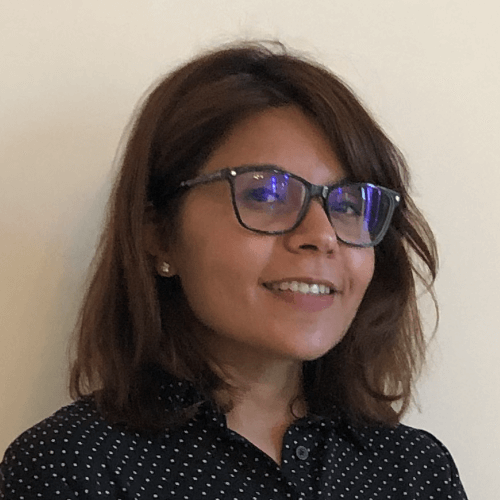How my Experience as an EAL Pupil Helps me Support my own Students

My own problems as an EAL pupil helped me understand the importance of tackling vocabulary limitations to support learning, says Farzana Iqbal…

I remember quite clearly when I first realised that I had a problem with words: I was at college and we were looking through a friend’s photographs. I asked how much the prints had cost and she had replied that the price ‘varied’.
Having not come across the word varied I asked – quite innocently – how much varied was, thinking at the time it was probably a slang term for an amount, like how a grand was £1,000.
The looks I received from the group were ones that stayed with me – looks that simply said I was out of my mind!
Vocabulary affects much more than academic success. A lack of vocabulary has affected every area of my life; as a young adult I would avoid attending social events in case I said something inappropriate – which had happened on a few occasions!
Early in my career I would sit through meetings where I knew that I had something of value to add, but not quite the right words, as I was able to reply in Urdu but needed some time to translate this to English.
I often wonder whether I would have progressed further in my career, in comparison with my peers who did not have this word deficiency.
Limited exposure
As a child with English as an additional language (EAL) I remember sitting in classrooms as the teachers enthusiastically shared the ‘word of the day’.
Only accessing them in school, I never had the opportunity to practise these newly learned word beyond the classroom, as we spoke mainly Urdu at home.
I recently came across research which talked about the need for multiple exposures to a word before it becomes part of our long-term memory.
Now knowing this, when I am teaching I ensure that after introducing new vocabulary, I provide children with multiple exposures to the words in different contexts, spacing this practice so the children are able to retrieve and continue to use these words.
In my role as a primary teacher I have observed many children, including non-EAL pupils, whose limited vocabularies have hindered their learning in various ways – from being unable to access the reasoning and problem-solving tasks in maths (because they contained words that children didn’t understand) to comprehension tasks where they have been unable to fully process the texts they are studying.
I have also been in classrooms where teachers have placed children with limited vocabularies in the lower groups even though the groupings have not matched the child’s cognitive ability.
Beyond gestures
A few weeks ago I was discussing pets with a group of children and a pupil talked enthusiastically about her pet cat and how she played with it. Struggling to come up with the word ‘stroke’, she made long stroking gestures and repeated, “I do this,” several times.
Although it’s easy to gesticulate when you’re younger and most adults are patient, as we get older it’s trickier as these gestures can be considered inappropriate.
While I use a multi-sensory approach to teaching vocabulary, incorporating images and gestures, I also understand that in order for children to describe their environment, words are key.
I was recently asked to lead a CPD session on developing vocabulary and was initially reluctant, as I felt that having struggled with vocabulary throughout my life I was not the right person to lead in this area and would have nothing of value to add – other than emphasising that addressing the vocabulary gap is one of the most important things we as teachers can do to support academic success.
My mentor reminded me that some of the best maths teachers are those who have struggled with the subject themselves.
Throughout my teaching career I’ve watched many children, especially those with EAL, struggling to get their point across, becoming animated and using gestures; I understand some of their struggles as I have faced similar issues and now use some of the strategies that have supported me in developing my own vocabulary.
For the past few years I have been looking at ways to address the vocabulary gaps for myself and the children I teach.
Books like Isabel Beck’s Bringing Words to Life and Alex Quigley’s Addressing the Vocabulary Gap have not only provided me with clear strategies for teaching vocabulary but also reminded me what life-changing impact we as teachers would have if we were able to support children with developing their vocabulary.
They would be able to improve their oracy skills, access the academic vocabulary and achieve far more than they would with their limited vocabulary. Although our influence is limited to the classroom, we can still make a huge difference to a child’s vocabulary and success in later life.
CPD session
The vocabulary CPD I delivered was well received by staff and I was pleased with their participation throughout the session.
Outlined below is the structure I followed:
- I began with a question asking staff to discuss how many words need to be understood before we can fully comprehend a text and provided them with multiple choice answers ranging from 50% to 95%.
The correct answer is 95%. When I shared this with my own children their answers ranged from 50% to 60% and they were shocked when they I told them the correct answer.
My reason for using a question at the start of the training was firstly to ensure staff had something to do as we waited for others, and secondly to highlight the impact vocabulary has on comprehension. - I then shared the shocking statistic that there’s a 30 million word gap by the age of three between children in a language-rich home environment and children in a language-deficient home environment, according to research by US academics Betty Hart and Todd Risley in their book Meaningful Differences in the Everyday Experience of Young American Children.
That’s why we need to focus on vocabulary. The training was for staff from Y1 to Y6 and I wanted to highlight, especially for Y1 staff, that children were walking into their classrooms with this word deficiency. - I also wanted to focus on the consequences if we did nothing to address the vocabulary gaps, sharing research that talked about how poor vocabulary affected children at later stages in their education.
There is evidence that children with limited vocabulary (alongside other factors) are less likely to achieve the higher grades at GCSE. - I knew staff would be concerned as to how to even begin to fill the word gap, so to support with this I focused on Isabel Beck’s three tiers of vocabulary: tier one covers the common, everyday words that many children enter school knowing already; tier two comprises words usually found in written texts rather than oral language; tier three contains content-specific vocabulary, often defined in textbooks or glossaries.
We briefly discussed each tier and shared example words. I emphasised the need to focus on tier-two words. I also talked about the need for multiple exposures to the words (around four to ten) in different contexts and giving children child-friendly definitions rather than just handing them a dictionary. - At the midway point I moved to an informal but organised discussion for sharing practical ideas on teaching vocabulary, from EYFS to Y6. I wanted to ensure staff could leave with a bank of ideas to use in their classrooms.
For me, the best training sessions have been those that had a good balance of theory and practical; training events where strategies and ideas were shared which I could use in my classroom the following day.
A few days after the training it was hugely satisfying to see children actively using the strategies shared during the training.
Farzana Iqbal is working as a lower school leader responsible for Y1-3 at a primary school. Follow her on Twitter at @MsIqbal_teacher.











